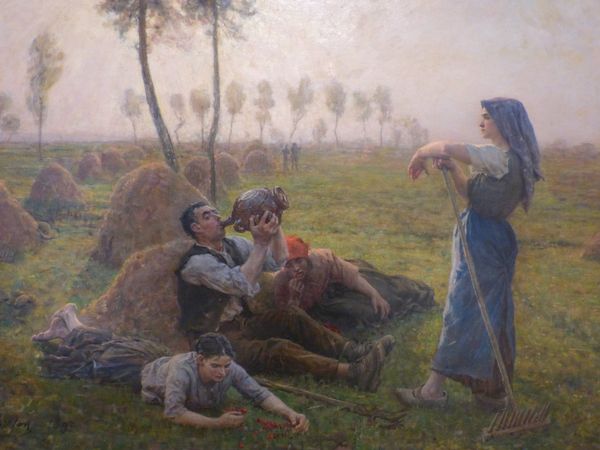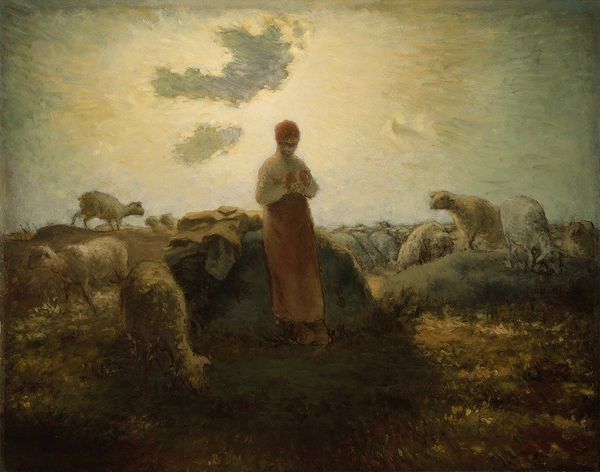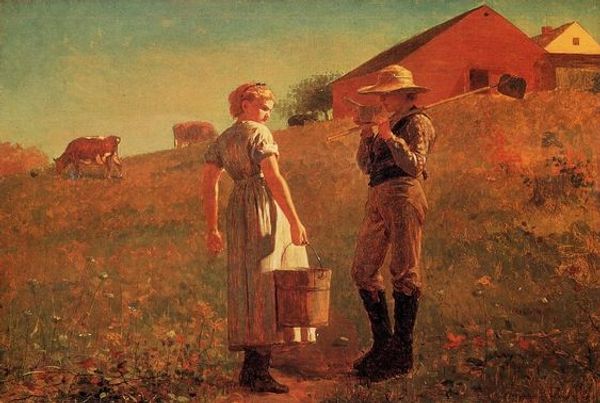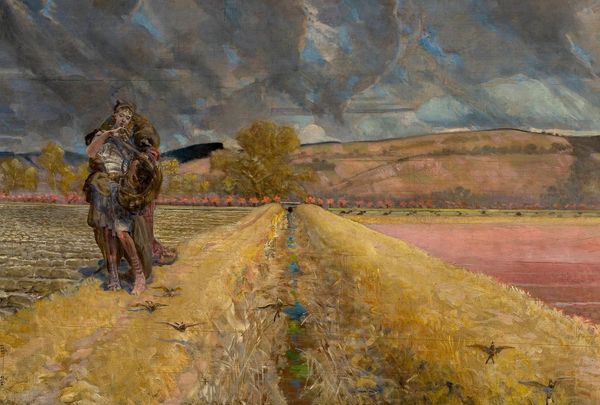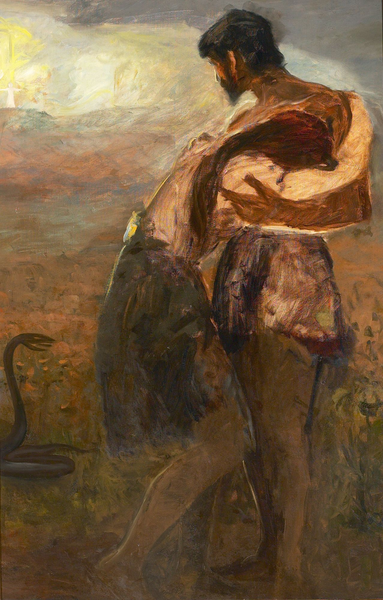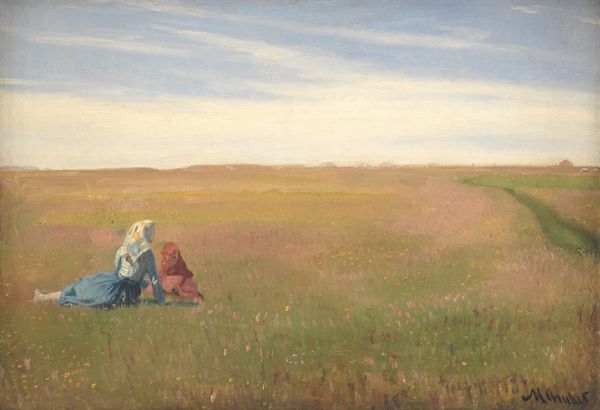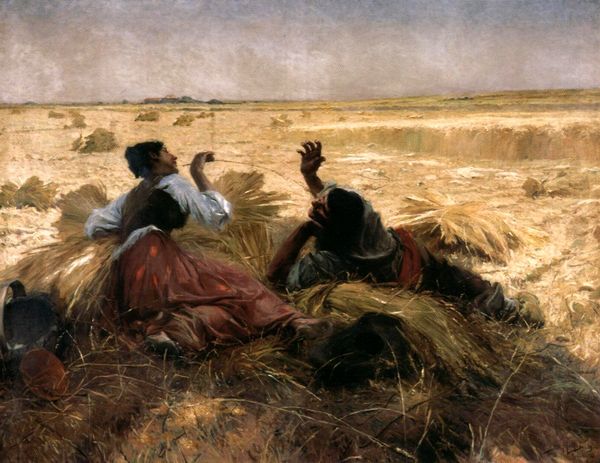
Copyright: Public domain
Curator: What strikes me immediately about Józef Chełmoński’s "Storks," painted around 1900, is its atmosphere of peaceful contemplation. There’s a distinct connection between the figures and the landscape. Editor: It's lovely, isn't it? But when I look, I can’t help but think about how it's rooted in a deeply class-based, patriarchal system. What roles are open to those figures within the socio-economic reality the work implies? Curator: Precisely. Chełmoński, working at a time of immense social change in Poland, often depicted the realities of rural life, drawing on realism, while incorporating elements of impressionism and post-impressionism. Look at the brushstrokes, capturing the light on the figures' clothing, and on the field of grass and wildflowers, very plein-air in its execution. How do those factors situate it historically for you? Editor: The imagery reads as potentially romanticizing a difficult existence; this risks sanitizing the lives of peasant communities, who existed within constraints of gender and labor expectations of the time. Are the storks a metaphor, or an accurate representation of his time? Do they reflect their circumstances in any way? How could it speak to ecological consciousness in its time? Curator: I see them as representative of renewal, continuity. Storks were symbols of spring and good fortune and also very linked to Polish identity. They represent, in a sense, an idealization of rural life in relation to an industrializing world. The location of the stork's nest in this imagery is also evocative; raised up high, its precarious perch is almost as hopeful as it is vulnerable. Editor: So much rests on the interpretation of those details! To appreciate "Storks" now means engaging with the social dynamics it hints at: questions of labor, land ownership, perhaps even resistance or agency found within a limited scope of possibility for figures such as these. Curator: Perhaps a crucial component to acknowledging the socio-historical context alongside his visual poetry. It reminds me to consider a society’s structure. Editor: Absolutely, because these social landscapes provide us an entryway for discussing equity and freedom as we strive toward a more egalitarian future. It’s crucial to interrogate imagery—like in this beautiful yet complex work.
Comments
No comments
Be the first to comment and join the conversation on the ultimate creative platform.

